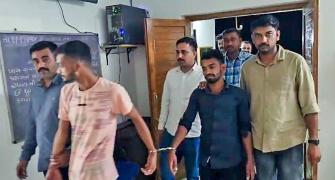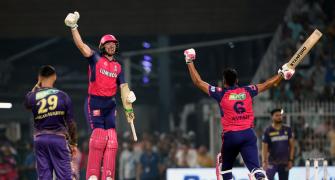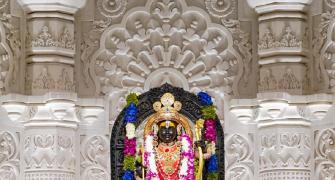Affirming his government's commitment to working with judiciary for improving delivery of justice, Prime Minister Manmohan Singh on Saturday said that the Law Commission is looking at improvements required in the court procedures for a better criminal judicial system.
He made the remarks while addressing the concluding function of the sesquicentennial celebrations of the Bombay high court in Mumbai. Following is the text of prime minister's speech:
"It gives me great pleasure to be in the midst of this very distinguished gathering of legal luminaries in the concluding function of the 150th year celebrations of the High Court of Bombay.
I am particular happy to be in Mumbai for the auspicious occasion of Navroz. I convey my greetings to all the citizens of Mumbai and Maharashtra on this auspicious occasion. Ever since the Bombay high court was established on August 18, 1862, it has been witness to remarkable history in the making. It is difficult to think of other comparable institutions in our country which have as many momentous and memorable historical events figuring in their life histories as the Bombay high court.
Lokmanya Tilak's famous statement in this high court, now contained in a marble tablet outside the Central Court room where he was tried, and the proceedings of the trial of Mahatma Gandhi before Judge Broomfield stand as two out of the many examples of an unrivaled legal and judicial heritage which continues to inspire succeeding generations of Indians.
Mahatma Gandhi, Babasaheb Ambedkar, Bhulabhai Desai, K M Munshi and Sir Phirozeshah Mehta, who were heroes of our freedom movement, honed their skills in the practice of law in this magnificent building of the Bombay High Court. Stalwarts of the legal profession like Sir Jamshedji Kanga, H C Coyajee, M A Jinnah and Sir Dinshaw Mullah strode the halls of building of the High Court as legal geniuses of their age. Some of our most distinguished Judges like Mahadev Govind Ranade, Badruddin Tyabji, Narayan Ganesh Chandravarkar, K T Telang and M C Chagla have adorned the Bench of the Bombay High Court, both before and after our independence. Some of the finest legal minds of recent times including H M Seervai, M C Setalvad, C K Daphtary, Nani Palkhiwala and N P Engineer perfected their art in the court rooms of this great institution. Badruddin Tyabji was the first Indian legal luminary to be called to the English Bar in 1867.
It is remarkable that the first Chief Justice, the Attorney General and Solicitor General of independent India's were from this court, and even more remarkable, that those three significant positions continue to be occupied by the products of this Bar even today. Over the last 65 years, 22 judges of and from this high court have been elevated to the apex court and as many as eight of them have adorned the office of Chief Justice of India, including one as the longest serving Chief Justice ever. Additionally, 9 transferees have travelled through these hallowed portals to the apex Court. In the more recent past, two distinguished lady judges of the Supreme Court have been from this high court.
This is a truly breathtaking set of statistics for any judicial institution and one can be really proud of this great heritage.
This institution -- the Bombay high court -- is and has been a spectacular bulwark of freedom in independent India. Its land-mark decisions have contributed to a legal and jurisprudential architecture of fairness, freedom, social justice and human rights. Its celebrated judgments in specialised branches of law such as intellectual property, cyber laws, securities and banking law, corporate laws and international commercial arbitration have vastly enriched our understanding of the evolving legal regime in these areas.
The Bombay high court has demonstrated time and again that the judicial process is neither cold nor impersonal. Through its creative and dynamic interpretations, it has worked for the continuing relevance of laws to the realities of our times. While interpreting the legislative will, it has attempted to fill the gaps in the law and supplied omissions to correct legal uncertainties. That is not to say that there have been no dilemmas, no contradictions or no aberrations. That is inevitable because the blind and seemingly cold and impersonal statue of justice does not always sit easily with the supplicating and humble statue of mercy. But both are vital to this temple of justice and that is why both are prominently displayed in this building.
The law is not only a code of commands. It is, in its relationship to society, the source of freedom, a methodology for redress of grievances, a source of good governance and, above all, an instrument of social and economic change. In moulding the law to subserve these causes, the Bombay high court has not hesitated to cast aside old maps to charter new ground. And it has endeavored to do so consistent with the demands of stability and certainty, and the need to preserve the sanctity of the constitutional charter that divides sovereign power of a free people into different organs of government.
All the three organs of government must work together to ensure social, economic and political justice for the citizens of our great country. The judiciary has a very direct role in this task- that of upholding the Rule of Law and ensuring that the people of India enjoy their Fundamental Rights like the Right to Life and Personal Liberty, Right to Equality etc. The judicial institutions in our country face the unenviable task of delivering timely justice to millions of people in our country at affordable cost. With the rapid economic growth that our country has seen in the last two decades or so, this task has become even more complex, more specialised and more challenging.
I believe that our judiciary has acquitted itself with distinction in shouldering its onerous responsibilities.
Our government stands committed to working with the Judiciary to bring about improvements in the justice delivery system. We have taken a number of initiatives for this purpose. In the year 2011 we launched the national Mission for Justice Delivery with the twin objectives of increasing access by reducing delays and arrears and enhancing accountability. A Constitution Amendment Bill for raising the age of retirement of judges of the high courts is now before the Parliament. A comprehensive proposal has been formulated for establishment of an All India Judicial Service.
An Inter Ministerial Group is examining what amendments in the Negotiable Instrument Act are needed, along with other measures, to check increasing litigation arising out of cases of bouncing of cheques. A group under the Chairman of Law Commission is looking at the improvements that are required in court procedure and processes for a better criminal justice system.
It is heartening to know that the overall pendency of cases in various courts of the country has declined by more than 6 lakh over the period July to December 2011. The Bombay high court and its subordinate courts have contributed handsomely to this achievement, reducing their pendency by 5 lakh cases annually since the year 2010.
Let me end by paying tribute to the great men and women who have built the Bombay high court into such a magnificent and glorious institution. Each one of us can do no more than to use such occasions to rededicate ourselves to our cherished ideals. I cannot think of a more fitting paradigm for these celebrations."





